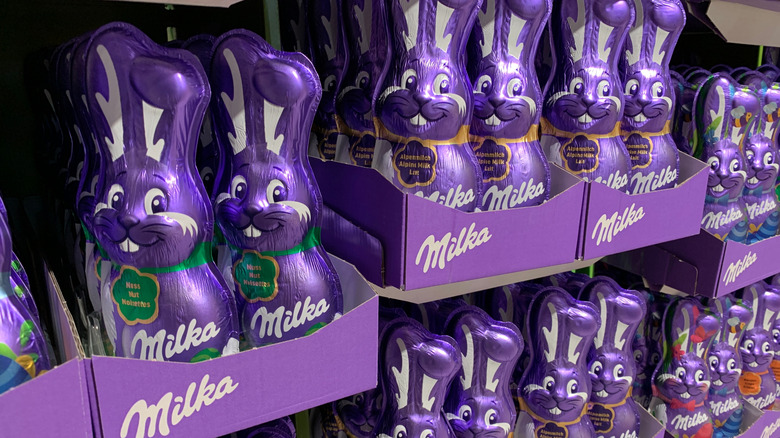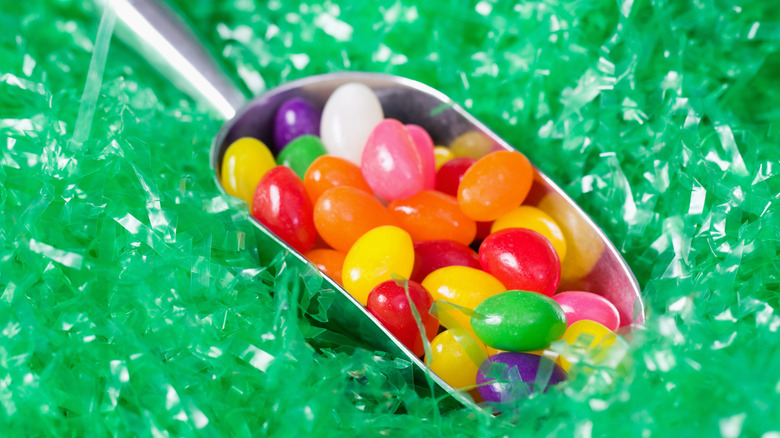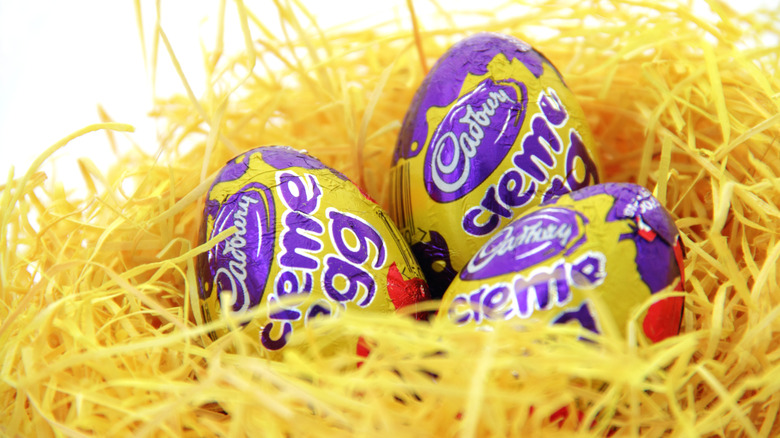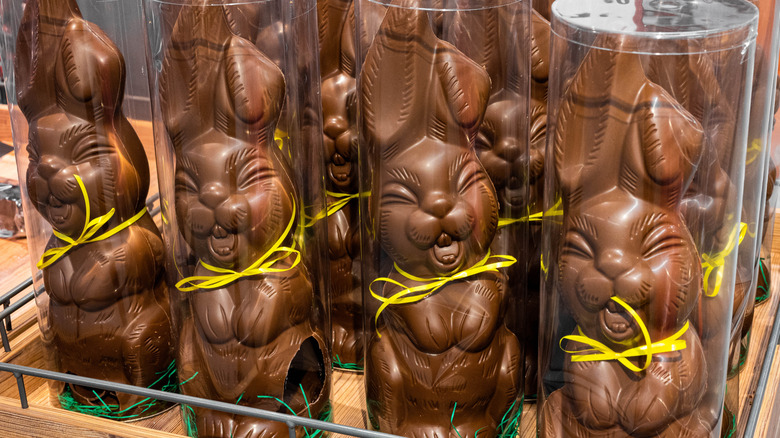How Easter Candy Became The Sweet Tradition We Know And Love
Depending on a person's beliefs, how they celebrate Easter can vary. These days, there are so many ways to celebrate the holiday it's challenging not to find a little something for everyone. A more modern Easter tradition is the large variety of sweet Easter candy that hits store shelves with abundant shapes, colors, and flavors just waiting to hop from an Easter basket onto your taste buds.
It's hard to imagine a time where there weren't enough options for every state to have their own preferred Easter candy. After all, Easter is the second-best holiday for candy sales after Halloween. In 2024 alone, Easter candy sales exceeded $5 billion dollars. Believe it or not, the Bible makes no mention of an Easter bunny. So, where did all this adorable candy come from?
Early known Easter bunny lore comes from the 1600s, when Oschter Haws (or "Easter Hare") would deliver colorful eggs to children and hide them in the yard for them to find. In the 1700s, the stories of Oschter Haws were brought to the United States and slowly but surely, the boom of Easter candy became exactly what it is today.
Jelly beans
April 22 is National Jelly Bean Day, but this joyous day honoring these sugary sweet beans is easily overshadowed by the most important day in the lifecycle of a Jelly Bean — Easter. Every year around 16 billion of them are either consumed during Easter festivities, or doomed to pile up as the Easter candy you need to get rid of.
The chewy inside of the jelly bean is believed to be associated with a candy that dates back to biblical times: the Turkish Delight. Credit for the invention of the jelly bean is given to a Boston confectioner, William Schrafft. Schrafft put on a clever and endearing marketing campaign for his creation when he made an ad suggesting people buy jelly beans to send to soldiers during the war. In the 1930s, jelly beans became a popular choice for Easter baskets because the vibrant colors and oval shape gave them the appearance of a miniature, decorated Easter egg.
Chocolate eggs
What came first, the Easter Bunny or the Easter Egg? The egg is a symbol of new life that's often paired with springtime celebrations. Chocolate eggs date back to the 19th century and now, no basket is complete without at least one rolling around in the mix of candy and Easter grass. Germany and France started off making chocolate eggs, but it was a U.K. company, Fry's, that began including elaborate crocodile patterns on the chocolate eggs. A lovely visual meant to hide any cracks or imperfections in the chocolate.
In 1919, Fry's merged with Cadbury, and in 1923, the company began creating the candy many of us now associate with Easter by filling the chocolate eggs with creme. Cadbury Creme Eggs won the hearts of consumers in the 1990s when a commercial aired featuring a plethora of adorable animals all auditioning to be the new Cadbury Bunny. Cadbury isn't alone in making chocolate egg history, the largest chocolate egg ever recorded was 34 feet tall and roughly 16,000 pounds. The egg was made by Tosca in Italy in 2011. Smaller chocolate eggs are much easier to fit inside baskets, though.
Chocolate bunnies
The hare, the myth, the legend — the Easter Bunny. Well, the chocolate one anyway. It isn't possible to create a perfectly curated Easter basket without him. The chocolate bunny is to Easter what Mariah Carey is for Christmas — an icon. Every year, 90 million chocolate bunnies patiently wait for the chance to pop up in every grocery store, pharmacy, and gas station, begging to go in a basket.
Chocolate bunnies are made by pouring hot, melted chocolate into a bunny mold and shaking the contents until they cover the entire mold with no air bubbles. To make them even larger, chocolate bunnies are often hollow. Large chocolate bunnies are, by now, a part of Easter candy history. When the stories of Oschter Haws made it to the United States in the 1700s, a German shop owner, Robert L. Strohecker came up with the idea of attracting customers to his store with a giant, chocolate Easter bunny; earning him the relatively unimaginative title, "The Father of the Chocolate Easter Bunny."
The largest chocolate bunny on record was made for Brazil's Chocofest with a Godzilla-like stature weighing in at 8,000 pounds and standing 13 feet high. Over the decades, chocolate bunnies have continued to be the target of elaborate creativity. By 1934, flare was added by adding everything from sports equipment to musical instruments. Possibly the most elaborate chocolate bunny is one that'll cost you around $49,000 dollars and comes with a pair of 1.7-carat diamonds for eyes — that is carats, not carrots.



